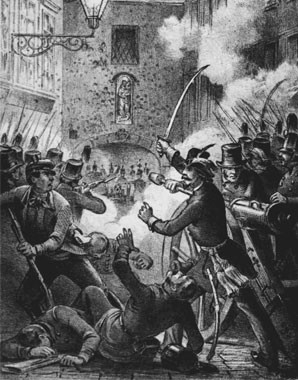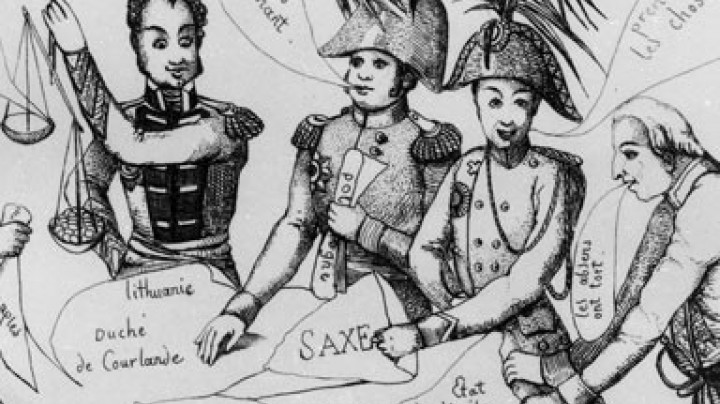Constitutional experiments. Paper plans and social practice
During the course of the revolutionary events of 1848, it was hoped that the people’s concerns would be reconciled with the interests of the Monarchy in the form of a constitution. 1848 marked the start of an age of draft constitutions on paper which did not always match the aspirations of large sections of society.
During the course of the March Revolution of 1848 in Vienna, steps were taken to draw up a first constitution. The Pillersdorf Constitution of April 1848, named after the Minister of the Interior, Baron Franz von Pillersdorf, proposed a bicameral system. Imperial Diet, and later Imperial Council, were the names by which the parliament of the Austrian part of the Empire was known until 1918.
Even when an Imperial Diet was convened, political participation was limited to the landowning and educated classes who were predominantly represented there. The basic constitution was revoked by the ‘Silvesterpatent’ under Franz Joseph in 1851. This set up a neoabsolutist regime in which the Court was the centre of decision-making for the whole state. The important pillars of Franz Joseph’s style of leadership were the army, the bureaucracy and the Catholic Church. What had been gained in the March Revolution of 1848, such as freedom of the press, was de facto revoked, at the very latest by the time of this basic constitution. Dissatisfaction spread amongst the population, since this constitution not only brought no improvement for them, but even increased censorship and police surveillance. In 1860 internal political pressure from the people and defeat at the hands of Piedmont-Sardinia and France, as well as the high level of military expenditure associated with this, compelled the government to ratify the October Diploma. This manifesto, set up as a compromise between the Centralists and the Federalists, was not in keeping with the political ideas of Franz Joseph, but he was gradually obliged to meet the demands of the people. In the next draft, the February Patent of 1861, a modified form of the October Diploma provided for a parliament with upper and lower chambers, nominated by the provincial assemblies. Not all the territories of the Monarchy were proportionately represented, however, and this only increased the conflicts between the various nationalities.
After the 1867 Compromise with Hungary the Emperor had no choice but to back down and steer a ‘more liberal’ course.
In 1867, together with five other constitutional laws, the ‘Basic State Law on the Universal Rights of Citizens’ was incorporated into the December Constitution together with the human rights that had been demanded since 1848. Even today the Basic Law is still a fundamental component of the Austrian Federal Constitution. This was the first constitution to be adopted not by the Emperor but by the Imperial Diet, and it marked the end of the era of constitutional experiments. Austria became a constitutional monarchy in which the franchise conditional upon property and education continued to exclude a large part of the population from participation in the political process.


















